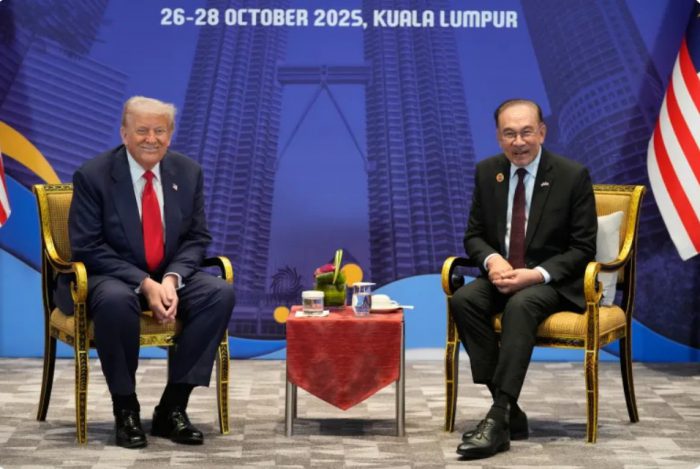At the ASEAN Summit in Kuala Lumpur, President Trump unveils sweeping trade pacts with Malaysia, Thailand, Cambodia, and Vietnam—reshaping Asia’s economic map and reasserting U.S. dominance over China’s backyard.
Kuala Lumpur, Malaysia – U.S. President Donald Trump left Southeast Asia on Monday after a whirlwind of diplomacy that may redefine the region’s economic order. At the 47th ASEAN Summit, Trump presided over the signing of a landmark ceasefire between Thailand and Cambodia and announced a series of strategic trade agreements with four key nations — Malaysia, Thailand, Cambodia, and Vietnam — all designed to tilt Asia’s balance of power away from China.
The White House confirmed that Malaysia and Cambodia secured reciprocal trade deals, while Thailand and Vietnam signed framework agreements, laying the groundwork for future pacts. Each agreement carries the signature hallmark of Trump’s trade philosophy — “reciprocity through pressure.”
Under the new arrangements, all four nations accepted U.S. tariff rates averaging 19–20% and committed to sweeping market reforms. In return, Washington offered limited tariff relief and preferential treatment for select exports. Malaysia, in particular, scored major wins — zero tariffs on palm oil, rubber, and cocoa, alongside a commitment to $70 billion in capital investment in the U.S.
“This is America’s return to Asia—not with lectures, but with leverage,” one White House official said privately after the summit.
Trump’s deals go beyond traditional free trade. Malaysia, Thailand, and Vietnam agreed to purchase billions of dollars in U.S. agricultural goods and aircraft while opening digital service markets to American companies. Thailand and Malaysia also signed a rare-earth cooperation pact, ensuring critical mineral supply chains bypass Chinese control — a move with far-reaching geopolitical implications.
However, the summit left lingering questions. Trump’s threat of 100% tariffs on semiconductors and 40% on transshipments (goods rerouted through third countries, mostly Chinese exports) remains unresolved — a potential flashpoint for Southeast Asia’s intricate supply chains.
Economists also cautioned that the agreements’ legal standing is murky, as Trump enacted them under executive emergency powers, bypassing Congress.
“They are not free trade agreements in the legal sense,” warned Jayant Menon of Singapore’s ISEAS-Yusof Ishak Institute. “They’ll be enforced through the threat of even more punitive tariffs.”
For Malaysia, the ASEAN host nation, the trade pact was both symbolic and strategic. Analyst Priyanka Kishore of Asia Decoded called it “peace of mind on tariffs,” noting that Kuala Lumpur emerged as the model template for Trump’s broader Indo-Pacific trade vision.
In what many see as a counterweight to Beijing’s Belt and Road Initiative, Trump also championed U.S.-Malaysia cooperation on critical minerals, signaling an American comeback in the resource race that defines Asia’s future industries.
While critics accuse Trump of transactional diplomacy, supporters hail his approach as pragmatic realignment — forcing fair trade through tough negotiation. As one senior diplomat from Singapore put it,
“Trump didn’t just visit Asia. He rewrote the rules of engagement.”
With Trump set to meet Chinese President Xi Jinping in Tokyo later this week, the stage is set for a new chapter in global trade rivalry — one where Southeast Asia may once again become the arena for the world’s next economic power struggle.





